I have been carrying the same Backcountry Access shovel for the last decade. It’s done a tour of duty in the Alaska Range and shoveled snow on numerous trips across five continents. But reluctantly, I have to admit the old girl might be ready for retirement. At least that is what Jordan, one of my frequent touring partners, persistently tells me. And nobody should make their touring partners nervous, or they may do the same to you.
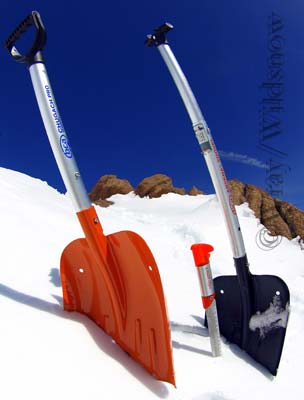
BCA's Chugach, Arsenal Shovels & Integrated Snow Saw
With our Alaska trip coming up, I think the timing is right. If there is any place that will put some wear on a shovel, it’s Denali. In fact, my soon to be retired shovel carries many scars from her last trip up there. So we have been vetting some of Backcountry Access’s latest and greatest this winter. As I am sure most Wildsnow readers know, Denali is a shovel fest. Whether it’s digging out tent platforms, a kitchen, snow for melting, caves, or trying to keep the tents from collapsing in a storm, a shovel is an integral piece of gear up there. A solid and efficient shovel may save your life in more than one scenario.
In Colorado my primary shovel use is for pit digging and snowmobile rescue (thankfully no people rescue so far). So I have been testing out the BCA Arsenal/Companion Shovel (I mention Companion because that is the name of BCA’s medium sized blade). It’s very similar to my soon to be retired shovel, with a slightly larger 10 x 11in aluminum blade and telescoping shaft (extended length 37.5in), a must for us tall guys.
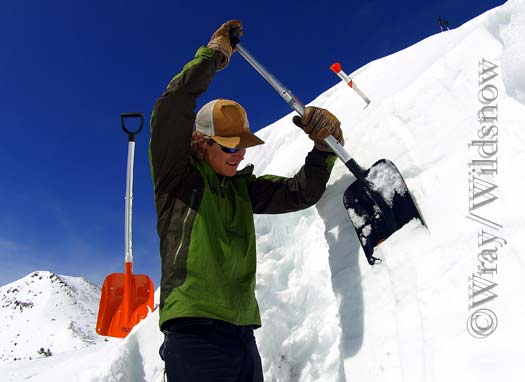
The blade is flat and square, keeping my pit walls up to standards.
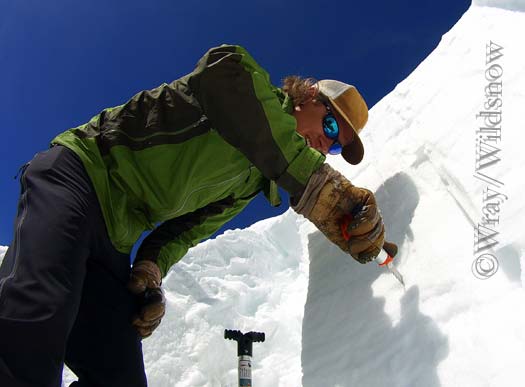
In addition, the Arsenal boasts an integrated 35cm saw for column isolation, emergency wood cutting, or perhaps some light pruning if you are into that sort of thing.
Depending on the tour, I occasionally find myself ditching the saw to save weight (5oz), but when it makes a trip it’s nice to have the saw contained in a place that won’t cause destruction of my other gear. All in the integrated system weighs 30oz, exactly the same as my old shovel though with the addition of the saw. I certainly like that.
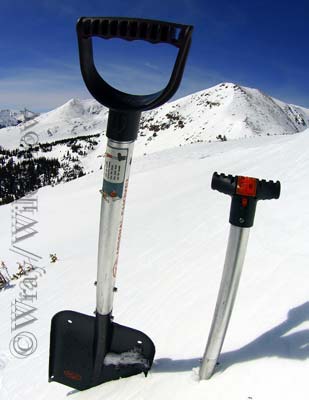
When moving large amounts of snow with heavy gloves, the D-grip is a must.
So the Arsenal has been a great replacement for my everyday use shovel, but we are headed north soon, so how does it fit into our Alaska snow moving plan? The blade is sturdy enough to handle all but the hardest snow, the shape will allow the artists among us to really sculpt a camp or snow cave, and the size is sufficient to move respectable amounts of snow. Modifications? You knew there would be some. The first change has been the addition of a D-grip handle. We contacted the folks at BCA and they were able to provide us with a few. The change is simple, just slide the D-grip equipped shaft extension into the place. By the way, I spoke with BCA and if additional D-grip extension tubes are available, they will sell them to anyone who contacts them, though they aren’t available through the standard retail channels.
The snow saw contained in the handle will of course be a casualty, but it’s not designed for the heavy block cutting we will be doing up north anyway. The addition of the D-grip extension shaft brings the extended length to 40.5in and the weight to a reasonable 26oz. I think we will be pleased with the Arsenal for excavation and precision work, which after swapping to a D-grip, is essentially a Companion shovel. Though the Companion is no longer sold with the D-grip handle due to a simplification of BCA’s shovel line.
But what about the serious snow removal? Well for that task we have been testing out the BCA Chugach Pro Ext. With a large 12.5 x 11.5in blade and a D-grip handle, it seems build for the job right off the shelf. However I must say that you can’t have a big enough shovel up there. We actually took an aluminum grain scoop on our last trip and it worked fantastic. Though it seems someone may have sharpied “honk if you’re horny” on it without the knowledge of the guy carrying it on his back the first day on the Kahiltna (he was last on the rope). That added some entertainment on a serious slog, for more groups than just ours. The problem with the grain scoop was weight, 6lbs versus 38oz for the Chugach. The telescoping shaft (extended length 42in) also makes it easier to pack and easier on the back.
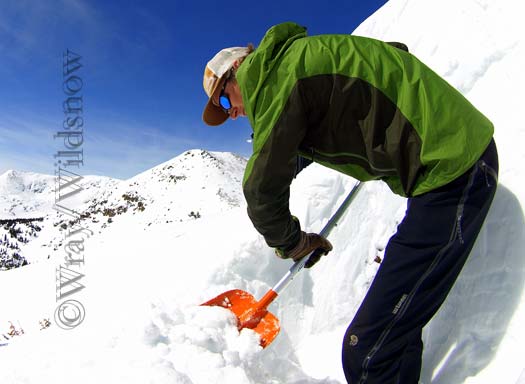
The Chugach really moves snow well. I understand folks are even using it to clear driveways out here. Seems like an expensive solution to me, but hey your neighbors will at least know that in addition to being domestic, you lead a secret backcountry life.
I want to add that I have used telescoping shovels in the past that felt a little flimsy when shoveling heavy wet snow in the extended position, I have not experienced this feeling with either the Chugach or Arsenal. In fact, both feel very sturdy considering the large blades and light weight. I also want to mention that the trade-off with the larger blades is whether or not they fit in the popular avy gear pockets common on most ski packs these days. The Companion blade just barely fits into the avy pocket on my BD Anarchist (last season’s model). I actually attribute the tight fit with a damaged zipper on that pocket. And the Chugach, forget about getting that blade into my BD Anarchist avy pocket. But I carried my shovel in the main compartment of my pack for years, so I won’t complain too much. I suspect this is less of an issue on some other avy pocket designs.
So after Lou brokers a deal to borrow a steel spade for the high camp, I think our shovel situation is resolved.
WildSnow guest blogger Caleb Wray is a photographer and outdoor adventurer who lives in Colorado and travels worldwide. He enjoys everything from backcountry skiing to surfing.
